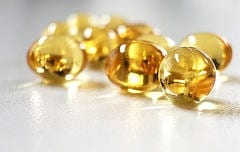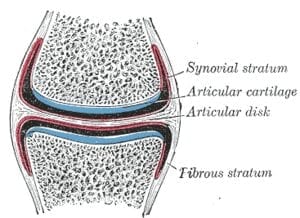
A potential new way to fight obesity-related illness has been uncovered, thanks to serendipitous research led by investigators at the Case Western Reserve University School of Medicine.
The collaborators, from Case Western Reserve University, the Cleveland Clinic Foundation and Cornell University, discovered the essential nutrient vitamin E can alleviate symptoms of liver disease brought on by obesity. “The implications of our findings could have a direct impact on the lives of the approximately 63 million Americans who are at potential risk for developing obesity-related liver disease in their lifetimes,” says Danny Manor, an associate professor at the Case Western Reserve University School of Medicine.
On Wednesday, April 24, Manor and colleague Varsha Thakur will present the group’s findings at the annual meeting of the American Society for Biochemistry and Molecular Biology, held in conjunction with the Experimental Biology 2013 meeting in Boston.
As is often the case in science, Manor’s research team at Case Western stumbled upon the findings entirely by accident. While studying the effect of vitamin E deficiency on the central nervous system, “we used liver tissue to practice our surgical techniques,” recalled Manor, an associate professor of nutrition and pharmacology. To the team’s surprise, they realized that the mice were in fact in the advanced stages of nonalcoholic steatohepatitis. Known as NASH for short, it’s a common complication of obesity characterized by fat accumulation, oxidative stress and inflammation in the liver. It is the most severe form of nonalcoholic fatty liver disease and is a major cause of tissue scarring known as cirrhosis that leads to liver failure and may progress to liver cancer.
An essential antioxidant, vitamin E had been shown by recent studies to alleviate some symptoms of NASH in human patients, suggesting that there is a link between adequate vitamin E levels and liver disease. To test this hypothesis, the team studied a mouse that was engineered to lack a protein that regulates the levels of vitamin E in the body. As expected, they observed increased oxidative stress, fat deposition and other signs of liver injury in the mice. Importantly, points out Manor, “supplementation with vitamin E averted the majority of NASH-related symptoms in these animals, confirming the relationship between vitamin E deficiency and liver disease.”
The precise effects of vitamin E on health have previously been difficult to ascertain, though its antioxidative properties were suggested to offer some protection from a variety of well-known maladies, including heart disease, cancer and neurological diseases such as Alzheimer’s and Lou Gehrig’s disease (amyotrophic lateral sclerosis, or ALS).
“These findings may have a significant impact on public health,” says Manor, “as the vast majority of adults in the United States do not consume the amount of vitamin E recommended by the National Institute of Medicine.”
The Latest Bing News on:
Vitamin E
- Here's Why You Don't Need IV Vitamin Therapyon May 1, 2024 at 9:30 am
IV vitamin drips are marketed to offer a wide range of benefits, but there's no evidence to support these claims. In some cases, they could even be dangerous.
- Page settingson May 1, 2024 at 7:52 am
Coenzyme Q10 has been used for heart problems (such as heart failure, angina), high blood pressure, Parkinson's disease, gum disease, and certain diseases passed down through families (Huntington's ...
- Can You Take Vitamin C and Iron Together?on April 30, 2024 at 2:00 pm
Iron is often sold in products that also contain vitamin C. Vitamin C can enhance iron absorption, but, as with all supplements, there are considerations.
- Elevate your vitamin B12 intake with vegan nori wrapson April 29, 2024 at 7:59 pm
Rich in protein and with a hint of vitamin B12, edamame beans enhance any vegan diet. For a tasty nori wrap, mash the beans with tahini to form a smooth base ...
- Looking for info on the benefits of vitamin E? What to know before taking the supplementon April 29, 2024 at 12:38 pm
A whopping 88.5% of Americans aren't getting enough vitamin E naturally. What are the benefits of vitamin E and downsides to the supplement ...
- The 43 Most Popular Amazon Items E! Readers Bought This Monthon April 27, 2024 at 3:01 am
From affordable jewelry to time-saving cleaning products, we rounded up the most-loved Amazon products so you can stock up on your favorites. Again.
- Evion's Vitamin E Cream in a Brand-New Avataron April 26, 2024 at 10:37 pm
Concerned about maintaining your skin's hydration amidst the scorching summer heat, it's time you shield your skin against the season's harsh elements and embrace sun-kissed days with confidence and ...
- Can vitamin D help fight cancer?on April 25, 2024 at 9:45 pm
When his colleague Evangelos Giampazolias, now at the Cancer Research UK Manchester Institute, discovered that switching off the gene which provides instructions to make the aptly named vitamin ...
- How to use vitamin C for acne, according to skin expertson April 24, 2024 at 8:01 am
Dr. Kluk agrees, noting that, while vitamin C is not an acne treatment, it can help to reduce the appearance of any dark marks left behind by blemishes. This is also referred to as post-inflammatory ...
- Women say their faces are ‘literally glowing’ from vitamin C serum that’s ‘better than £80 product’on April 24, 2024 at 6:35 am
The brand describes it as "a product focused on quick and effective anti-aging. It firms, tones, and leaves the skin smooth," adding: "The high content of vitamin C supported by ferulic acid, vitamin ...
The Latest Google Headlines on:
Vitamin E
[google_news title=”” keyword=”Vitamin E” num_posts=”10″ blurb_length=”0″ show_thumb=”left”] [/vc_column_text]The Latest Bing News on:
Obesity-related illness
- Questions About Dog Health? Veterinarians Have The Answer.on May 1, 2024 at 2:28 pm
Allergies, which can cause skin problems. This article discusses the common health concerns of Chihuahuas, including dental issues, low blood sugar, kneecap dislocation, heart problems, tracheal ...
- Study: Combine intermittent fasting with high-intensity exercise to boost healthon May 1, 2024 at 11:00 am
Among inactive women with obesity, combining time-restricted eating with high-intensity exercise may lead to more transformative changes in body composition and cardiometabolic health than either ...
- Will Changing the Term Obesity Reduce Stigma?on April 30, 2024 at 9:13 pm
A new term is intended to limit negative connotations, but some experts consider it imprecise and difficult to interpret.
- Obesity Due to High-Fat Diet Could Be Reversed by Mitochondria-Targeting Drugson April 30, 2024 at 6:25 pm
Researchers at the Karolinska Institute may have found a new way to treat obesity and related disorders by targeting the mitochondria. Their findings in mice demonstrate that a specific class of drugs ...
- Researchers identify causal genetic variant linked to common childhood obesityon April 30, 2024 at 5:00 pm
In addition to childhood obesity, the locus in question has been found to be connected to a variety of related health issues, including elevated type 2 diabetes susceptibility, increased body fat ...
- Does obesity really increase your risk of dementia?on April 30, 2024 at 8:56 am
Many dementia charities advise people to maintain a healthy weight to reduce their risk of dementia. But some studies have suggested that obesity might actually protect against dementia. What does the ...
- New Study Reveals Built-In Mechanism In Brown Fat: Key To combating Obesityon April 30, 2024 at 7:57 am
The research team's findings suggest that blocking the action of AC3-AT could offer a promising strategy for safely activating brown fat and addressing obesity and related health issues. By removing ...
- New drug candidate reverses obesity in miceon April 30, 2024 at 7:22 am
Researchers at Karolinska Institutet may have found a new way to treat obesity and related disorders by targeting the cells' mitochondria. A study published in Nature Metabolism shows that a specific ...
- Big Pharma’s dogfight to dominate the anti-obesity marketon April 27, 2024 at 7:18 pm
Around the world, 100 companies have debuted weight-loss medications, which have become a multimillion-dollar business. Novo Nordisk’s Ozempic is currently the best-known, but it’s far from the only o ...
- Natural obesity fighters: How coffee, tea, and cocoa combat weight gainon April 22, 2024 at 7:03 pm
A review in Current Research in Food Science explores how bioactive compounds in coffee, tea, and cocoa combat obesity by inhibiting white adipogenesis and promoting brown adipogenesis and lipolysis.
The Latest Google Headlines on:
Obesity-related illness
[google_news title=”” keyword=”obesity-related illness” num_posts=”10″ blurb_length=”0″ show_thumb=”left”]










